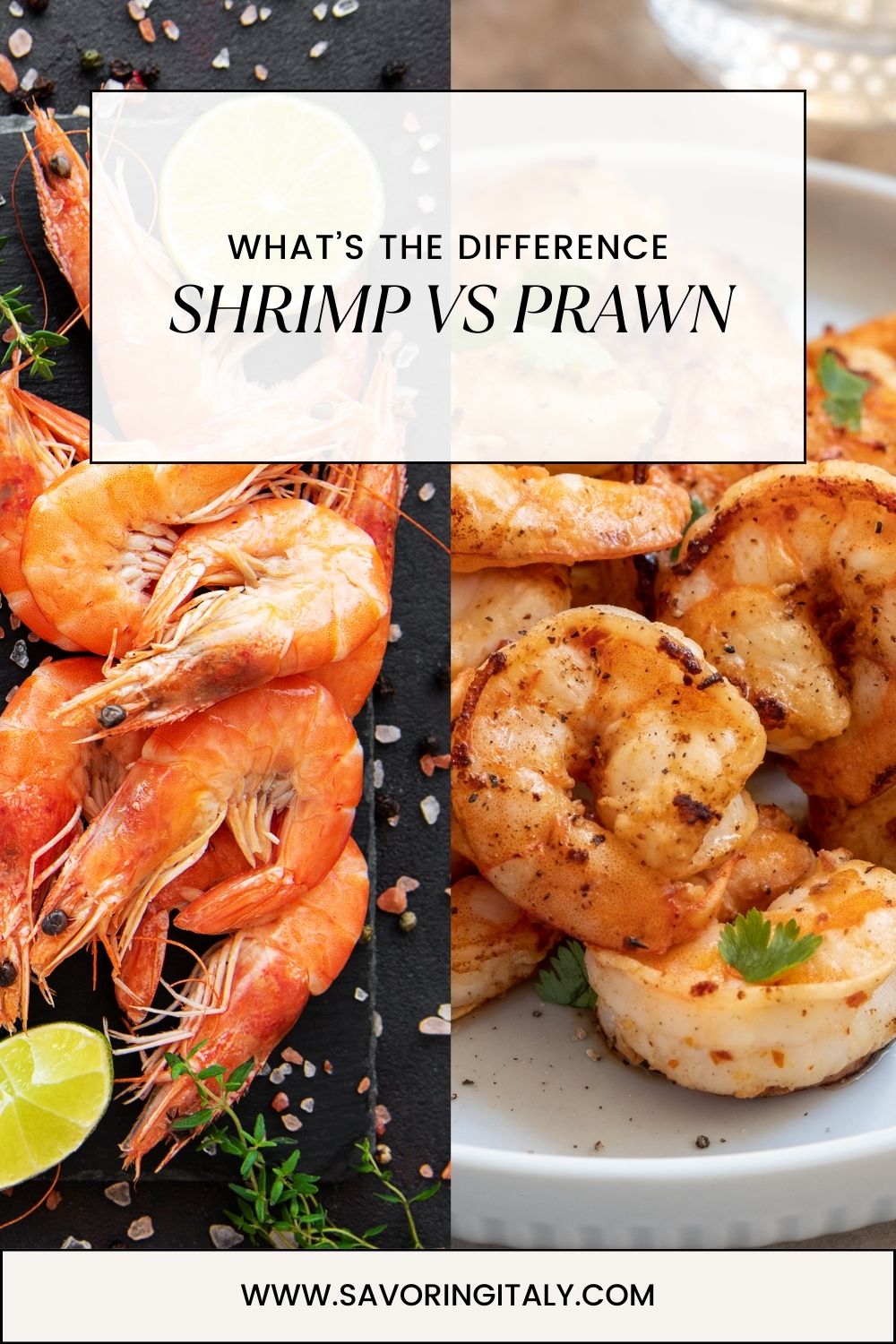If you've ever been shopping at a seafood market, you may have encountered small, sweet shrimp and also, the larger and meatier prawns. You probably were like me, and didn't know all the differences between the two of them.

You could be checking out a seafood restaurant menu or even looking up some new recipes to explore and try at home, and it's finally the time to figure out how are shrimps and prawns different. Let's go over these subtle, and not so subtle, difference once and for all!
Jump To
- Prawns vs Shrimps
- Difference in Shrimp and Prawn Anatomies
- Shrimp and Prawns Live in Different Waters
- Prawn and Shrimp are Different Sizes
- Shrimp and Prawns Have Different Taste
- Shrimp vs Prawn: Labels for Consumers
- Prawns and Shrimps could be used interchangeably in a recipe
- Some other guides to learn from:
Prawns vs Shrimps
It's time to face this topic. And I promise, it's not just the two of us that are confused. Sometimes even the best of chefs in a hurry could be confused trying to identify a shrimp or a prawn. The words could be used to describe one or the other, however, there are some differences that set these delicious crustaceans apart. Let's go over them!
Difference in Shrimp and Prawn Anatomies
While some aspects may be more notable than others, there are distinct features that differentiate these tasty crustaceans. When it comes down to their biology, both shrimp and prawns are decapods, meaning they're crustaceans with 10 legs. That's where the similarities end, as shrimp belong to the sub-order called Pleocyemata, and prawns belong to the sub-order called Dendrobranchiata.
Gils: The gils are the most difficult defining difference to notice. Shrimp and prawns have different types of gills: shrimp possess lamellar (plate-like) gills, whereas prawns have branching gills.
Side plates: In terms of body structure, shrimp have a side plate that overlays segments both in front and behind, while prawns have side plates that overlap tile-like from front to back. This structural difference influences their shape, making it a reliable indicator of whether you're enjoying shrimp or prawns. Unlike prawns, the outer skeleton of shrimp allows them to curl tightly. Prawns have a straighter body due to the rigid nature of their outer skeleton.
Claws: Claws could be noticeable, if you have time to really look at them. Take a close look at their tiny legs, and you'll see some more differences. The front pincers of shrimp are the largest, with claws on two pairs of legs. On the contrary, prawns have their largest pincers on the second pair of legs and claws on three pairs of legs.
Eggs: Shrimp and prawns differ in another aspect: the way they handle their fertilized eggs. Shrimp carry their fertilized eggs beneath their tails, while prawns release their eggs into the water for growth.
Shrimp and Prawns Live in Different Waters
If you're able to figure out where your crustaceans were raised or caught, you've got another way of telling shrimp and prawns apart. Shrimp are mostly found in salt water, while prawns prefer freshwater.
Prawn and Shrimp are Different Sizes
When you are tackling prawns vs. shrimp, there will be size differences. Typically, shrimp are smaller than prawns. But there are some instances where a large shrimp is bigger than a typical prawn. I know, it's confusing!
Shrimp and Prawns Have Different Taste
Taste is not a reliable way to tell the two crustaceans apart. Even though different types of shrimp and prawns have variations in taste and texture, those differences don't neatly categorize them as "shrimp" or "prawn". Basically, while shrimp and prawns aren't identical, their flavors are similar, so you can easily swap them in recipes. Like this really delicious garlic butter shrimp could be made with prawns.
Shrimp vs Prawn: Labels for Consumers
We went over all the various differences between shrimps and prawns. Now, lets go over some more confusion in what you'll find at a seafood market when it comes to their label for you, the shopper. Also, depends on what country you find yourself in. The actual names "shrimp" and "prawn" are sometimes, erroneously, used interchangeably.
Here's how they're each identified for consumers.
The semantics regarding these two crustaceans is quite a mess. There is truly no consistency and it all depends on what country you find yourself in. In the UK and Commonwealth countries, "prawn" is a prawn and prawn is a shrimp. I told you it's a mess! In the States, "shrimp" is a "shrimp" and a "prawn" is for the larger freshwater species, but again, some large shrimps could bigger than a prawn.
In the UK and Commonwealth countries, “prawn” is used to describe both true prawns and shrimp. “Shrimp” is far more common in the United States, where “prawn” is reserved specifically for larger freshwater species. No matter what you call them, they’re a sure-fire hit when you’re craving seafood.
In terms of flavor, prawns and shrimp have few differences, although some prawns might possess a slightly sweeter taste. Shrimp typically come at a lower price point compared to prawns, so depending on what you're making, you shouldn't have to splurge on prawns.
Shrimp and prawns have comparable nutritional profiles and offer similar health benefits. These crustaceans provide an abundance of lean protein, while being low in saturated fat. Moreover, they are rich in essential nutrients such as omega-3 fatty acids, vitamins, and minerals.
The difference between scampi (langoustine) and prawns is that the scampi belong to the lobster family and prawns to the shrimp family.
Prawns and Shrimps could be used interchangeably in a recipe
You may be shopping at a local fish market looking for prawns and want to know can you use shrimp in its place for your recipe? The answer is: yes, you sure can.
In most recipes, it will be practically impossible to find any taste or texture difference between prawns and shrimps. If you encounter both shrimp and prawns at the fish market, the best way to decide what to choose to use in your recipe is by looking at the freshness, size, and whatever you prefer to use. They truly are interchangeable.



Leave a Reply